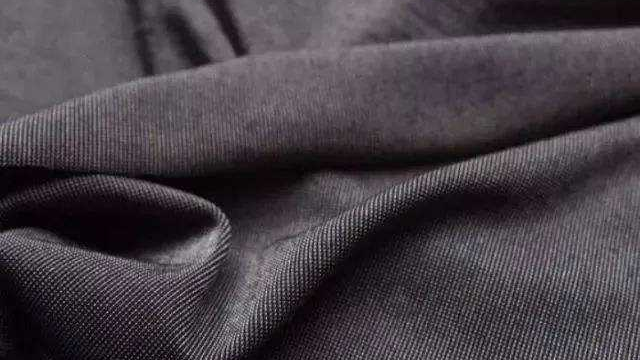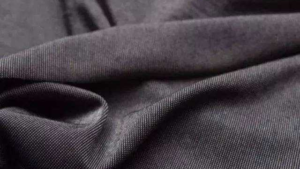
Modified fiber, also known as functional fiber, refers to a series of new functional fibers derived by chemical or physical methods to improve certain properties of conventional chemical fiber varieties (such as moisture absorption, dyeing, anti-static, flame retardancy, etc.). This is similar to the usual rubber modification, plastic modification, etc..
Usually, the clothes people wear are made of fibers, the raw material may be natural materials or synthetic, but the raw material state is not always perfect, for example, it may not dye well, so it needs to be modified by a series of methods to make the fiber more suitable for use, this is the most common application of fiber modification in life. Traditional modification methods include chemical and physical methods, and in recent years biological methods have also been developed.
The main goal of synthetic fiber modification is to give it the properties of natural fibers, or to meet the need for special properties, such as high strength, high modulus, high elasticity, heat resistance and various special functions. To put it simply, it is to add skill points to fibers.
To do so, it is necessary to have a systematic and profound understanding of the relationship between the structure and properties of natural and synthetic fibers. However, imitating natural fibers is not simply reproducing their tissue structure, but more importantly, simulating the functions of natural fibers by modifying them. However, due to the intricate relationship between fiber structure and properties, when a certain method is used to improve one property, it will inevitably cause changes in other properties. For example, improving the moisture absorption or dyeing properties of hydrophobic synthetic fibers by co-polymerization is often accompanied by a decrease in melting point or a decrease in strength. Therefore, it is important to prevent the valuable properties of the fiber from being overly affected in the modification. A comprehensive balance or “additive effect” should be found among conflicting effects to make the fiber material more valuable and more versatile.
Commonly used methods of fiber modification
1, physical method
Physical modification is usually the use of a variety of physical methods and means, without changing the main structure of fiber polymer macromolecules, by changing the fiber aggregation state structure, morphological structure, surface composition, etc. to improve the performance of the fiber. Ceramic fibers, metal fibers and the transformation of the crystal phase structure, usually related to the melt spinning and sintering method of regulation, and this is the result of physical modification and processing methods.
2, biological method
This is a new modification method only in recent years, it uses biotechnology, such as genetic engineering and biosynthesis technology, so that not only can increase the fiber product modification and improve the performance of existing fibers, but also to create some new “bio-fiber”. This is the synthesis of chemical and biological disciplines. The current situation of the development of new functional textile materials in China.
3、Chemical method
Chemical modification of polymers is through the chemical reaction of polymers, changing the type of atoms or original group of macromolecule chain death and its combination of a class of modification methods. By chemical modification, the chemical structure of the existing macromolecules is changed, thus improving the performance of the fiber or giving it new properties. The effect of chemical modification has durability, but the change of chemical structure, to a certain extent, will also cause some changes in the structure, thus triggering a series of changes in the performance of the fiber.
At present, China’s functional fiber materials have reached the international advanced level, characterized by the multi-functionalization and high performance of conventional fibers, with flame retardant, anti-bacterial, anti-static and other functions, such as: silicon – nitrogen system flame retardant viscose staple fiber, polyacrylonitrile pre-oxidation fiber, flame retardant polyester, flame retardant nylon, conductive polyester nylon composite fiber, conductive interposition aramid fiber, copper carbon nano-polyamide 6 ecological anti-bacterial fiber, polylactic acid ecological anti-bacterial fiber, ultra-fine denier porous recycled polyester eco-bacteria fiber, shaped polyamide 6 eco-bacteria fiber, etc., mainly used in special military and firefighting clothing, aircraft and high-speed rail interior materials, high-grade textiles, medical health materials and other fields.
At the same time, “Made in China 2025” proposes the development of new materials, high-value biomedical materials, energy saving and environmental protection, resource recycling, fashion clothing and apparel, medium and high-end home textile products, industrial textiles and other important content, the development of aerospace, marine equipment, wind power equipment, new energy vehicles and other key materials.
Common types of modified fibers
1, surface micro-pit grooves and high specific gravity fiber
The use of inorganic particles and organic blended spinning can get high specific gravity fiber, as a way to improve the drapability of the fabric. Blended with inorganic particles of fiber in alkali reduction, inorganic particles around the polymer is hydrolyzed, in the surface of the fiber appear many spit fire-like micro-pits. This surface can give the fabric a sense of coolness.
2、 High shrinkage fiber
① Low shrinkage acrylic fiber
In heat treatment, the shrinkage rate of 20-50% (70%) of the fiber (general fiber boiling water shrinkage rate is not > 5%, filament is not > 9%).
② High shrinkage acrylic
heat treatment, boiling water shrinkage of 15-45%; high-shrinkage polyester, boiling water shrinkage of 30-50%.
3、 Self-elongating yarn
It refers to the property of self-elongation when heat treatment is performed. Its self-elongation can reach 8-15%. Self-elongating yarn and high and low shrinkage yarn compound to form a high heteroshrinkage composite yarn, the difference in shrinkage between the components can be 30-45%.
After finishing, the low-shrinkage yarn floats on the surface of the fabric, forming a dense ultra-short wave silk circle and a peach skin feel. The high shrinkage yarn is concentrated in the inner part of the fabric as a backbone.
Easy dyeing means that it can be dyed with different dyes, and has bright color, complete chromatography, uniform hue, good color fastness, mild dyeing conditions, etc. Polyester is the most difficult fiber to dye among the commonly used synthetic fibers, and the easy-dyeing synthetic fiber mainly refers to the dyeing modified fiber of polyester. Easy to dye synthetic fibers common varieties in addition to cationic dyestuff dyeable polyester, there are room temperature normal pressure cationic dyeable polyester (ECDP), acid dyestuff dyeable polyester, acid or alkaline dyestuff dyeable polyester, acid dyestuff dyeable acrylic fiber, dyeable nylon fiber, cationic dyeable nylon fiber, etc.
5、 Water-absorbent and moisture-absorbent fiber
Water-absorbing and moisture-absorbing fibers are fibers that have the ability to absorb water and transport water to the adjacent fibers. Compared with natural fibers, most synthetic fibers are poor moisture absorption, especially polyester and polypropylene, improve the moisture absorption and comfort of synthetic fibers can be chemically modified and physically modified to improve the wetting and swelling ability of fibers, or made of porous fibers so that the internal formation of microporous cavity system to increase the ability of fibers to absorb water and moisture. Water-absorbing and moisture-absorbing fibers are mainly used in functional underwear, sportswear, training wear, sports socks and other products.
6、Mixed fiber yarn
Blended fiber is a compound silk composed of monofilaments with different geometric forms or physical properties, with the aim of improving the natural feel of synthetic fibers. Common mixed fiber silk has a different contraction, shaped, different denier and multiple different mixed fiber and other types.
① Shaped blended fiber
Blended fiber composed of monofilaments with different cross-sectional shapes, there are gaps and capillary structures between the fibers, which can reduce the coefficient of friction between the fibers, and the fabric has good fluffiness, moisture absorption and resilience.
② Heteroshrinkage blended fiber
In the process of finishing and post-processing, the high-shrinkage fiber shrinks due to heat and becomes the core fiber, while the low-shrinkage fiber floats out of the surface due to the difference in the length of the fiber and produces curl, while the gap is formed between the fibers, giving the fabric a fluffy feeling.
③ Different denier blended silk
Microfiber fabric has good softness and drapability, but often no body bone, in order to pursue soft but not rotten style, can use coarse denier fibers and microfiber blending of foreign denier blending method.
④ Multi-different blended fiber
It refers to a variety of characteristics such as differences in linear density, cross-sectional shape, thermal shrinkage, elongation, uneven thickness of single filaments, etc., to different forms of blended fiber combination, the purpose is to make it closer to the style of natural fibers.
Conclusion
Fibers through modification, with more excellent physical, chemical, mechanical, functional and other characteristics, using the advantages of modified fibers, so that they can be used in protection, reinforcement, high temperature, filtration and other fields, can be more widely used.




